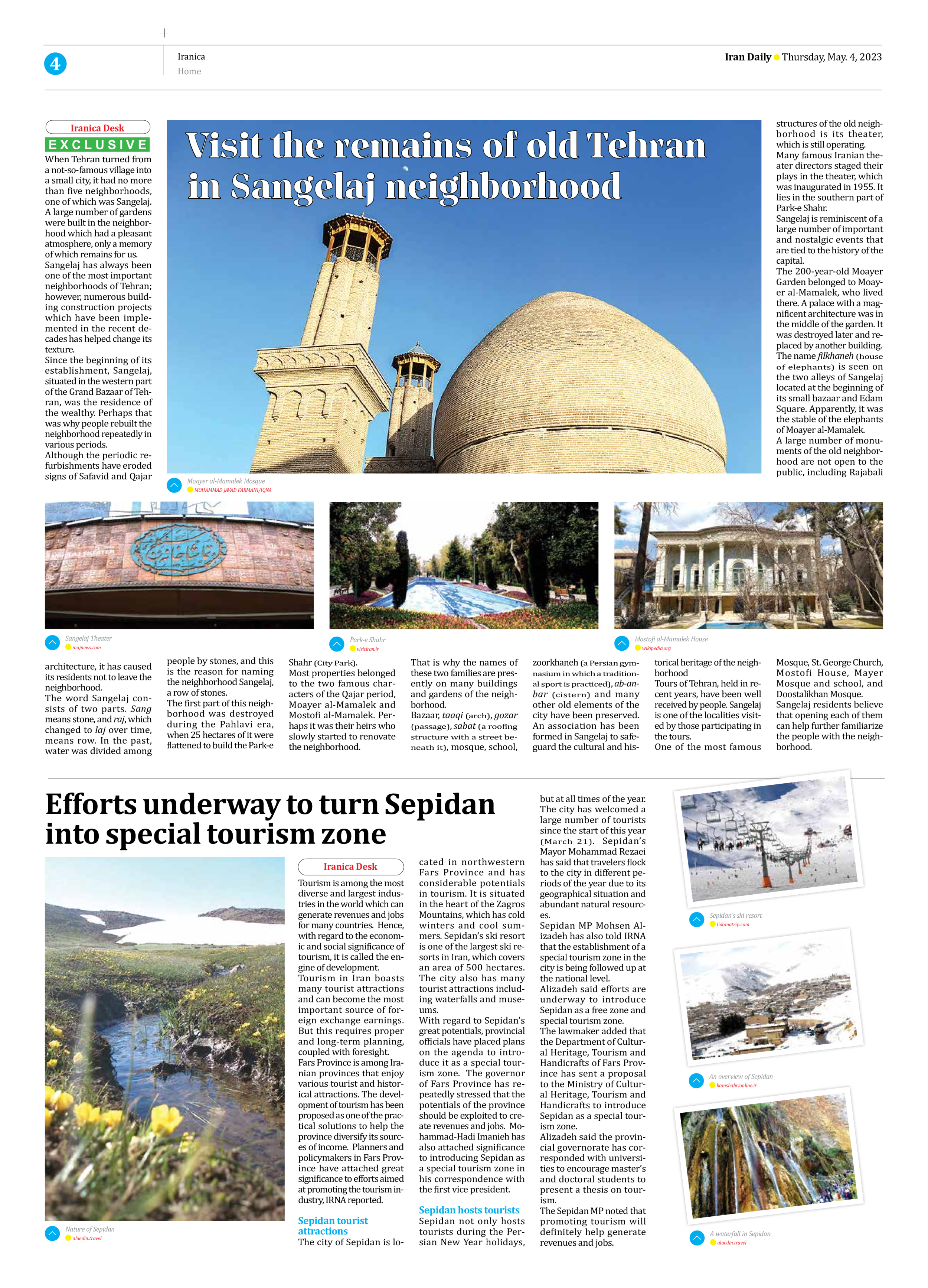
Visit the remains of old Tehran in Sangelaj neighborhood
When Tehran turned from a not-so-famous village into a small city, it had no more than five neighborhoods, one of which was Sangelaj. A large number of gardens were built in the neighborhood which had a pleasant atmosphere, only a memory of which remains for us.
Sangelaj has always been one of the most important neighborhoods of Tehran; however, numerous building construction projects which have been implemented in the recent decades has helped change its texture.
Since the beginning of its establishment, Sangelaj, situated in the western part of the Grand Bazaar of Tehran, was the residence of the wealthy. Perhaps that was why people rebuilt the neighborhood repeatedly in various periods.
Although the periodic refurbishments have eroded signs of Safavid and Qajar architecture, it has caused its residents not to leave the neighborhood.
The word Sangelaj consists of two parts. Sang means stone, and raj, which changed to laj over time, means row. In the past, water was divided among people by stones, and this is the reason for naming the neighborhood Sangelaj, a row of stones.
The first part of this neighborhood was destroyed during the Pahlavi era, when 25 hectares of it were flattened to build the Park-e Shahr (City Park).
Most properties belonged to the two famous characters of the Qajar period, Moayer al-Mamalek and Mostofi al-Mamalek. Perhaps it was their heirs who slowly started to renovate the neighborhood.
That is why the names of these two families are presently on many buildings and gardens of the neighborhood.
Bazaar, taaqi (arch), gozar (passage), sabat (a roofing structure with a street beneath it), mosque, school, zoorkhaneh (a Persian gymnasium in which a traditional sport is practiced), ab-anbar (cistern) and many other old elements of the city have been preserved.
An association has been formed in Sangelaj to safeguard the cultural and historical heritage of the neighborhood
Tours of Tehran, held in recent years, have been well received by people. Sangelaj is one of the localities visited by those participating in the tours.
One of the most famous structures of the old neighborhood is its theater, which is still operating.
Many famous Iranian theater directors staged their plays in the theater, which was inaugurated in 1955. It lies in the southern part of Park-e Shahr.
Sangelaj is reminiscent of a large number of important and nostalgic events that are tied to the history of the capital.
The 200-year-old Moayer Garden belonged to Moayer al-Mamalek, who lived there. A palace with a magnificent architecture was in the middle of the garden. It was destroyed later and replaced by another building.
The name filkhaneh (house of elephants) is seen on the two alleys of Sangelaj located at the beginning of its small bazaar and Edam Square. Apparently, it was the stable of the elephants of Moayer al-Mamalek.
A large number of monuments of the old neighborhood are not open to the public, including Rajabali Mosque, St. George Church, Mostofi House, Mayer Mosque and school, and Doostalikhan Mosque.
Sangelaj residents believe that opening each of them can help further familiarize the people with the neighborhood.







